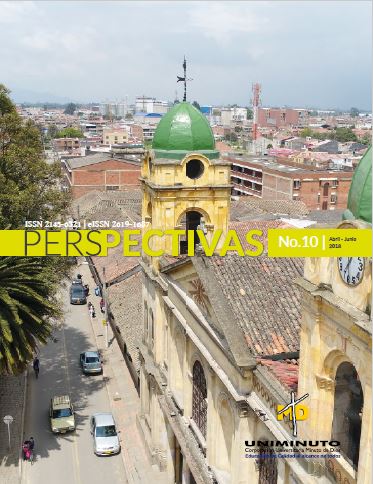Descripción del perfil de inteligencia en niños sordos del colegio departamental la Esperanza
Barra lateral del artículo
Cómo citar
Detalles del artículo
Contenido principal del artículo
Resumen
Aunque en Colombia no se cuenta con suficiente apoyo educativo para las personas sordas, se ha buscado insistentemente la forma de hacer equitativa e igualitaria la educación para los sordos, debido a que esto interfiere en la inteligencia de esta población al no recibir la misma educación que reciben los oyentes. Por tal motivo, buscamos conocer y describir el perfil de inteligencia de los niños sordos de cuatro a diez años, matriculados en el Colegio Departamental la Esperanza, sede sordos, en la ciudad de Villavicencio, Meta. Esta investigación tiene un enfoque cuantitativo que permite la recolección de datos de diseño no experimental-transeccional; el tipo de estudio es descriptivo, buscando especificar los perfiles y características de los individuos. Realizar esta investigación es viable debido a que el test de matrices progresivas de Raven
es una prueba dedicada a la medición de uno de los componentes del factor “g”, la capacidad de educación de relaciones, es decir, suponer una continuación propuesta por Spearman, la cual es la base de los constructos psicológicos. Este test brinda la posibilidad de la medición de la capacidad intelectual en ámbitos educativos teniendo en cuenta población inferior a los doce años con dificultades de lenguaje y audición, lo que es pertinente puesto que son las características de la población de esta investigación. Fueron evaluados quince niños con la prueba de Raven, específicamente la escala cpm, y el análisis de los datos se llevó a cabo mediante el programa SPSS
Referencias
second-generation deaf children with cochlear implants. International Journal of Pediatric Otorhinolaryngology, 1–10.
Recuperado de http://bbibliograficas.ucc.edu.co:2056/science/article/pii/S0165587616303433
Aristizabal, C., Rendón, E., & Valencia, M. (2013). Imaginarios que han construido los maestros de
básica primaria en torno al proceso de enseñanza -aprendizaje de los niños y niñas sordos integrados a la escuela regular (Tesis de pregrado).
Universidad de Manizales. Recuperado de http://ridum.umanizales.edu.co:8080/xmlui/handle/6789/193
Attallah, S., Ahmed, K., & Meisenberg, G. (2014). Factor structure of Wechsler Intelligence Scale for children–Third Edition (wisc–iii) among gifted students in Sudan. Mankind Quarterly, 55(1), 147–170.
Recuperado de http://bbibliograficas.ucc.edu.co:2068/docview/1617369796/A88223D91EC74123PQ/45?accountid=44394
Barragán, E., & Lozano, S. (2011). Identificación temprana de trastornos del lenguaje. Revista Médica Clínica Las Condes, 22(2), 227–232.
Recuperado de http://www.sciencedirect.com/science/article/pii/S0716864011704175
Betancur, D., Vélez, M., & Peña, A. (2013). Traducción automática del lenguaje dactilológico. Revista Ingeniería Biomédica, 7(13), 18–30.
Recuperado de http://www.scielo.org.co/scielo.php?pid=S1909-97622013000100003&script=sci_abstract&tlng=es
Chen, M., Wang, Z., Zhang, Z., Li, X., Wu, W., Xie, D., & Xiao, Z. (2016). Intelligence development of pre-lingual deaf children with unilateral cochlear implantation. International Journal of Pediatric Otorhinolaryngology, 90, 264–269. Recuperado de
http://bbibliograficas.ucc.edu.co:2056/science/article/pii/S0165587616303317
Cornejo, C., Jara, N., & Troncoso, J. (2014). Validación test de matrices progresivas de Raven escala coloreada, en escolares de la ciudad de Chillán (Tesis para pregrado). Universidad del Bío-Bío, Chillán.
Recuperado de http://repobib.ubiobio.cl/jspui/handle/123456789/204
Daza, M., Silver, J., Ruiz, M., & López, F. (2014). Language skills and nonverbal cognitive processes associated with reading comprehension in deaf children. Research in Developmental Disabilities, 35(12), 526-533.
Recuperado de http://bbibliograficas.ucc.edu.co:2056/science/article/pii/S0891422214003710
Demetriou, A. (2002). Tracing Psychology’s Invisible Giant and Its Visible Guards. The General Factor of Intelligence. En R. Stenberg (ed), How General Is It? Mahwah, New Jersey: Lawrence Erlbaum Associates, Publishers
Dogan, M. (2015). Intelligence of hearing-impaired children: An evaluation based on demographic, educational, and audiological characteristics. Egitim ve Bilim, 40(180), 135–154. Recuperado de
http://bbibliograficas.ucc.edu.co:2068/docview/1706204566/1F8DDEED01CE480EPQ/3?accountid=44394
Gardner, H. (1997). Estructuras de la mente: la teoría de las inteligencias múltiples (2ª. ed.). Colombia:
Fondo de Cultura Económica.
Gómez, F., Rincón, D., & Montealegre, G. (2012). Validación de la prueba de J. C. Raven: matrices
progresivas y de la prueba ace para estudiantes de primer año universitario: forma ‘47. Revista
Colombiana de Psicología, 5(2), 129–136. Recuperado
de http://www.bdigital.unal.edu.co/32904/
Hernández, R., Fernández, C., & Baptista, P. (2006). Metodología de la investigación (4ta. ed.). México:
McGraw-Hill. Recuperado de https://competenciashg.files.wordpress.com/2012/10/sampieri-et-al-etodologia-de-la-investigacion-4ta-edicion-sampieri-2006_ocr.pdf
Molina, L., Ipiña, M., Reyna, C., & Guzmán, R.(2011). Competencia social en niños con sordera profunda.
Revista CES Psicología, 4(1), 1–14. Recuperado de https://dialnet.unirioja.es/servlet/articulo?codigo=3672574
Porto, A., Angeli, A., & Marin, F. (2013). Habilidade viso-motriz e defiência intelectual: Estudo de validade
para o Bender-SPG. Acta Colombiana de Psicología, 16(2), 115–123. Recuperado de http://www.scielo.org.co/pdf/acp/v16n2/v16n2a11.pdf
Raven, J., & Court, J. (1996). Raven matrices progresivas (2°. ed.). Madrid, España: Tea. Recuperado
de https://archivosuni.files.wordpress.com/2015/11/raven-manual-completo-1.pdf
Rodríguez, Y. (2013). Estilo cognitivo en un grupo de estudiantes sordos congénitos de Bogotá. Revista
Colombiana de Educación, (64), 245–272. Recuperado de http://www.redalyc.org/articulo.oa?id=413634076011
Spearman, C. (1927). The abilities of man. Londres, Reino Unido: Editorial Macmillan and Co, limited.
Recuperado de https://archive.org/details/abilitiesofman031969mbp

